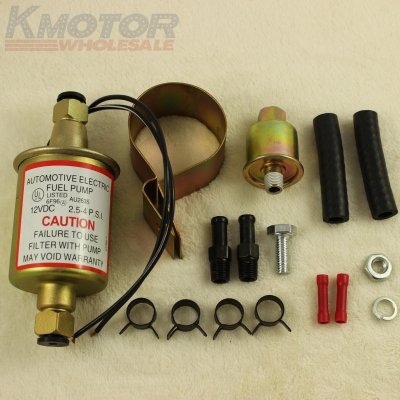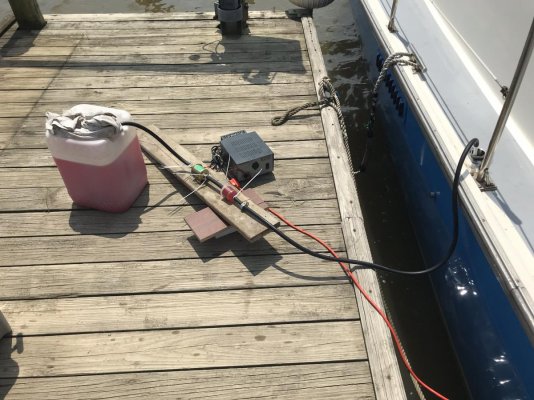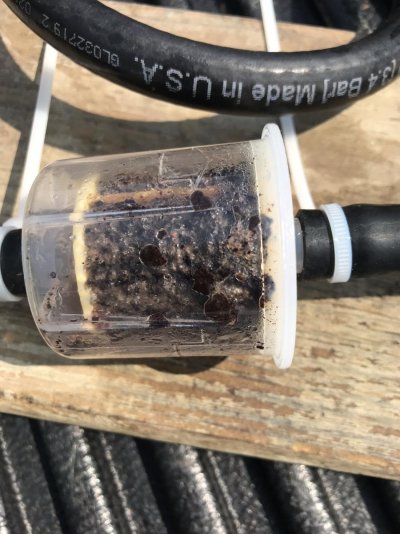Now for my $0.02 worth.
I agree that your fuel contamination probably came from the filler tube. The slot screams "leak point" to me. I'd replace it asap. Then I would look into adding a fuel polishing system, possibly adding another set of Racors. Anything to keep your fuel clean, because it's d@mned expensive if you don't.
I had a fuel contamination issue about 2 years ago. I took on 180G of diesel of which ~20G was river water (brackish). I didn't know anything was wrong until the engines quit. 2 International 9.0L diesels 3600Hrs ea. aboard a '82 Carver 3607. The engines tried to burn the water and superheated it into steam. This steam melted the rubber exhaust hoses on both engines right at the end of my risers. The bilges couldn't keep up with 2 engines dumping their exhaust cooling water into the bilge. We took on ~14inches of water in 10 minutes. The spray from the water killed both alternators, one starter, all 16 injectors and a rebuild on both injector pumps. Fortunately we were able to start our generator and run an emergency pump to keep us afloat. We made it to a haulout and began the repair process. ~$8000 in damage so far with me doing all the work. I have received $5200 back from a lawsuit filed by the Captains against the Marina. Doesn't help much, but it is something, one couple lost their 2014 70ft Viking. Most insurance won't cover bad fuel damage, since it is the Captains responsibility to obtain good fuel.
My insurance says that they won't cover contaminated fuel unless it is checked for contamination everytime.
Their Procedure that I was given is:
Pour an amount of fuel of no less than 1 gallon into a clear container
Allow to fuel settle for at least 15 minutes
Check for fuel contamination having settled to the bottom of container
If contamination exists then fuel is unacceptable.
Does ANYONE actually do this?!?
My solution is radical. Due to the amount of damage, age of the boat, my skill set, how much my wife and I like the size and layout of Star, and that we own her. We're going to get her to our home port of Baltimore and gut her. New wiring, plumbing, better fuel handling system, active fuel polishing system, new fuel, water & waste tanks, floor framing and decking, add propane, hard bimini over the aft deck, radar arch, hoist for dink, remove all the carpets and replace it with hardwood, etc. A TON of work.




